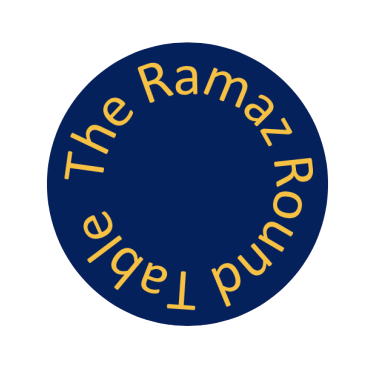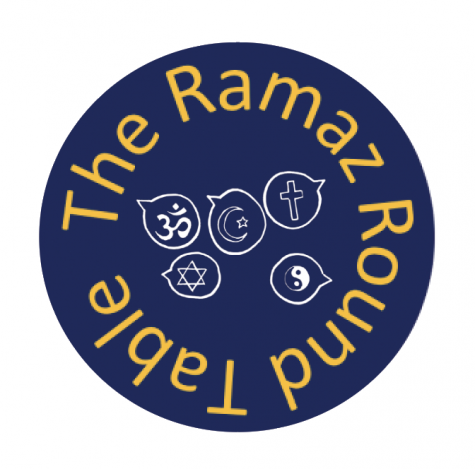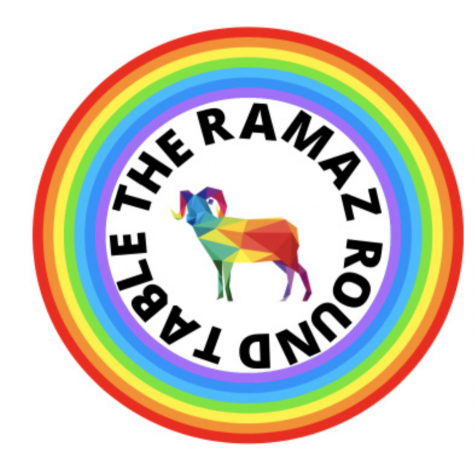RAMAZ ROUND TABLE: Should Ramaz enforce a uniform for students?
Emily Vayner ’23
Ramaz’s dress code has always been a perfect mixture of tradition and modernity. Both girls and boys dress codes offer a clean and presentable look, all while allowing students to explore their sense of fashion and style. By establishing a uniform, not only might students feel as though they are confined to a certain repetitive cycle, but it also discourages and disregards our individual differences in self expression. An appropriate dress code is already in place that aligns with tzniut or Jewish laws of modesty. A female student from a parochial school said, “We are forced to wear the same uniform every single day; I have to wear a skirt that is shorter than I would like, and other students make fun of me if my skirt isn’t short enough.” She thinks that uniforms disregard her comfortability and insecurities which affect her overall happiness when attending school. “School should be a place where I get to learn and hang out with my friends. I want to feel comfortable in my own clothes, especially after staying home for a year because of Covid,” she said.
When I switched from the Yeshiva of Flatbush to Ramaz, I remember being shocked that I was able to wear a red shirt instead of the same old blue collared one. A female student from Flatbush High School stated, “First the school made us wear our skirts all the way down to our ankles, and now that we got comfortable in those clothes, they said that we look shleppy and like we are dressed in ‘pajamas’ and that this is not allowed.” She says it is difficult because not only is the dress code restricting but it also feels almost as though “no uniform or dress code will ever be perfect enough to fit everyone’s liking.”
After coming back from last year’s quarantine lockdown, I was extremely excited to not have to wear pajamas to Zoom school every day and be able to wear whatever is appropriate and expressive to in-person school this year. Ramaz’s dress code has allowed me to feel confident in myself and puts a big smile on my face every time I come to school. Some days, I choose to dress more preppy by wearing a collared shirt underneath a sweater vest along with a pleated skirt and some black leggings. I like to wear monochrome clothes and match a beanie along with a set of funky socks and combat boots. I carry my laptop and school supplies in a black tote and accessorize with different kinds of rings, layer necklaces, bracelets, and black winged eyeliner. Every day I attend school, I try to do different color themes and patterns, and once I run out of colors, I start all over again or find new styles to explore. I am always excited to come to school and feel confident, enthusiastic, and comfortable in the clothes I wear. The fair flexibility of Ramaz dress code allows me to feel my Jewish presence all while exploring my fashion sense every day.
Rebecca Kalimi ’23
In Preludes, the Ramaz Upper Schools’ official student handbook, there is an established dress code for both girls and boys. Ramaz stresses the importance of tzniut, or dignity, and explains that the dress code’s purpose is to make sure that dignity is upheld in a way for all to be comfortable. One of the perks of being a private school is that Ramaz has the power to regulate student dress code and furthermore instate a uniform. Even though Ramaz has the authority to do so, I believe it wouldn’t be the correct choice. Instating a uniform would be subjecting all students to, at first glance, be the same as every other student. The reason this would be so detrimental is that the beauty of a school, especially Ramaz, is diversity. Every student is different and deserves to be able to have freedom in the way they dress to portray themselves as such.
Ramaz itself highlights this diversity in its motto for the year 2020. “See different” was the theme of last year which emphasized Ramazs belief that difference is important. By subjecting students to a uniform, we would be eliminating that aspect of our student life. An argument in the agreement with school uniforms would be to say that it would eliminate the stress of clothing brands. I disagree with that. Obviously, the amount of leeway a student would have within the dress code would be up to the school, but even leaving the shoe category open for customization would be allowing for countless name brands to be used.
The next point to address would be, if Raamz were to instate a uniform, would it be considered “too preppy” for school. Despite my reasons to negate a school uniform, I don’t think it would be “too preppy”. Ramaz is a prep school. If Ramaz were to decide that uniforms are a good idea for the students, as a private prep school, this wouldn’t be considered inappropriate. In fact, I think that if Ramaz were to decide to do so, most people in the Ramaz community wouldn’t be surprised. Ramaz prides itself on being a prestigious school, and creating a uniform would further reaffirm that belief.
All things considered, I personally believe that if Ramaz were to institute a uniform dress code, it would be detrimental to the uniqueness and diversity within the student body. Although that would be the case, Ramaz does have the power to do so and it would definitely fit into the “preppy” expectations that Ramaz has as a private school in the Upper East Side.
Sydney Eisenstein ’22
Throughout high school, teenagers strive to shape their own identities and combat the urge to conform with other teenagers. Due to this internal conflict that many teenagers experience, teenagers are susceptible to giving in to the urge of following others and giving up on their individuality. Ramaz should not force students to wear a uniform, and should even encourage students to express individuality with their clothing (within appropriate measures).
Some people may contend that uniforms prevent the stress of having certain clothing brands. I believe that Ramaz should not enable students to exist in a vacuum. Many students would be shocked when they left that vacuum after high school. Additionally, I think it is very difficult to create a uniform which completely suppresses any signs of individuality. For example, a student wearing the school uniform might be wearing an expensive jewelry brand or a well-known backpack brand. Therefore, if Ramaz had a uniform, some students would still be affected by the stress of owning certain brands.
There are many other private schools on the Upper East Side who see the benefits of uniforms and force students to wear uniforms. Perhaps Ramaz would fit in with the other private schools more if we had a uniform. However, Ramaz already stands out from other private schools because we are a Jewish school. Furthermore, there are no benefits to trying to fit in with other private schools. If Ramaz had a uniform, they would have the same regulations about skirt lengths that are currently in place. A uniform would give students a certain size of clothing, but that size would not have an effect on students’ skirt length because students would still be able to choose how to wear their skirts.
The current school dress code is a good balance between individuality and uniformity. It is important to tip the balance and allow students to be more expressive with their clothing because the development of students’ identities is at stake. Nonetheless, an aspect of uniformity should also be preserved to promote decorum in school.
Ashley Behm ’24
Currently, Ramaz students have to adhere to a lightly enforced dress code. Shirts with sleeves, and pants for boys or modest length skirts for girls. This dress code ensures that all students are dressed appropriately for attending a Jewish school. Many Upper East Side private schools have strict uniforms, however, I think that a preppy uniform is unnecessary and prevents self-expression. Many teenagers find comfort in being able to decide what to wear to school and choosing how we present ourselves. Uniforms certainly have their benefits, for example, students won’t feel pressured to wear a certain brand, trend, or style. However, I feel that the benefits of the current dress code are far greater. Students can wear what they feel most comfortable and confident in. On the contrary, with a uniform, students may feel self-conscious, or insecure in it. I also feel that uniforms restrict one’s individuality and give off the notion that being different, or unique is discouraged. All in all, our dress code is sufficiently able to encompass the Yeshiva requirements and self-expression.
Romi Chaovat ’24
Currently, Ramaz’s policy on clothing is a skirt for girls and moderate shirts, hence no cropped or sleeveless tops. For boys, the shirt policy is the same, along with the addition that they can’t wear sweatpants or jeans. Although this is not a uniform, it is a dress code. I support and understand the need for a dress code to regulate and instill a level of modesty at school. Being in schools adds a more serious environment than other places and given that this is a religious school, there is a need for a certain level of modesty. A dress code is a middle ground between a uniform and freedom to wear anything. It allows students to be individuals and express themselves with certain limits yet is not as extreme as uniforms. Uniforms would repress students from expressing their fashion choices and preferences. In regards to fitting in with other UES schools, I don’t believe it is a valid reason to enforce a uniform. Seeing as the student body doesn’t have much of a relationship with the surrounding UES schools, I don’t see the need to have the same policies on what students have to wear.
Andrew Spielfogel ’23
The Ramaz dress code is a part of its professional environment. Although the uniform requirements were reduced this year for the boys, it should not be reduced further for anyone. With dress codes, students tend to feel comfortable. Kids don’t have to worry about what patterned sweater to wear, or if they should wear a tanktop, since these items are prohibited. Even though students might feel trapped with a limited variety of options, they should remember our dress code requirements are on the broad side. For example, the Ramaz Upper School doesn’t force every student to wear the same blue colored shirt like in the Lower School does, but instead, students could wear any colored shirt they want. There are still so many options to choose from while maintaining cohesiveness in the articles of clothing people can wear. Additionally, wearing a button down shirt or a solid sweater makes students more presentable. If there were no requirements, this could lead to students looking messy and distracted, along with other students focusing too much on what to wear, adding additional stress to their workloads. Dress codes and uniforms add structure throughout the day in the morning, rather than ripping apart your closet, trying to decide what to wear. Other private schools on the Upper East Side tend to require similar uniforms, such as button-down shirts for boys and skirts for girls, and this adds to Ramaz’s presence in the Upper East Side community. Ramaz is closely connected to other Yeshiva League schools since we all share similar values of Judaism, and having a similar dress code to our neighboring schools helps us fit into our other community, that on the Upper East Side.









